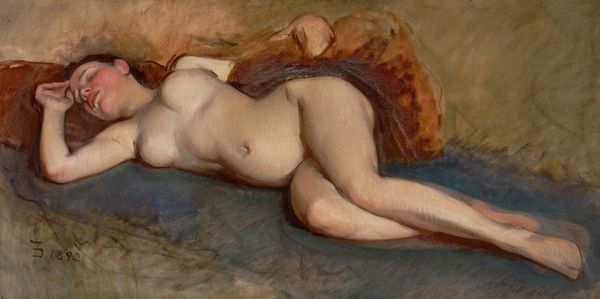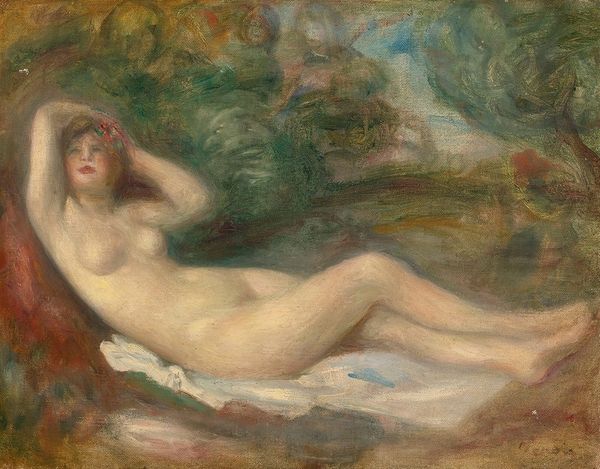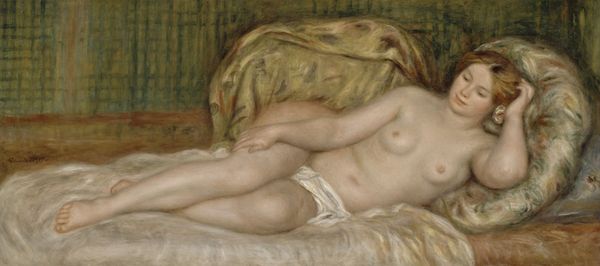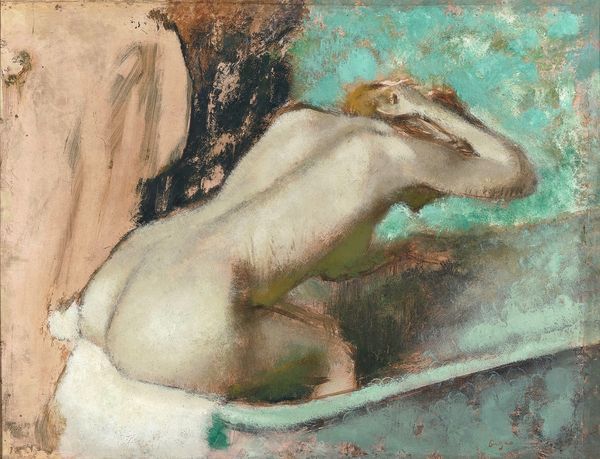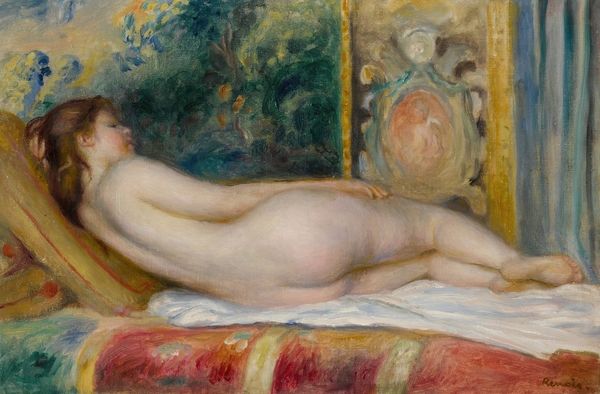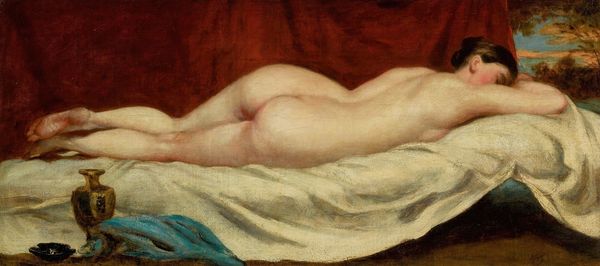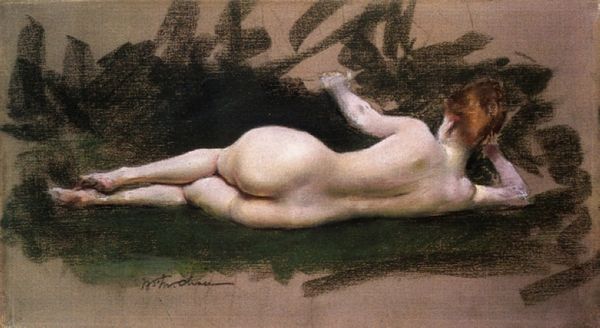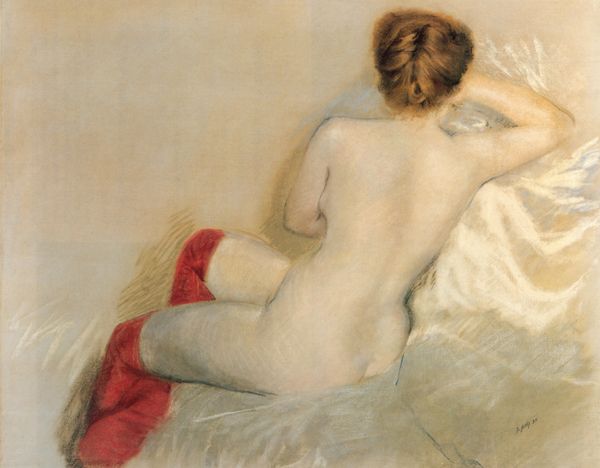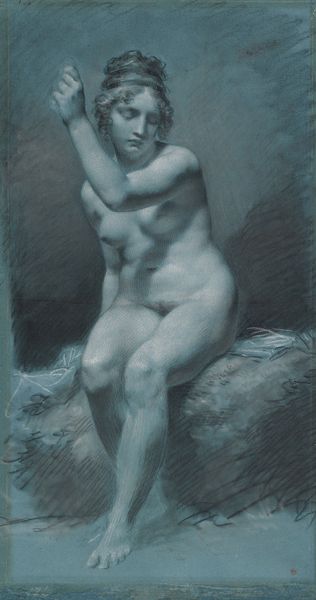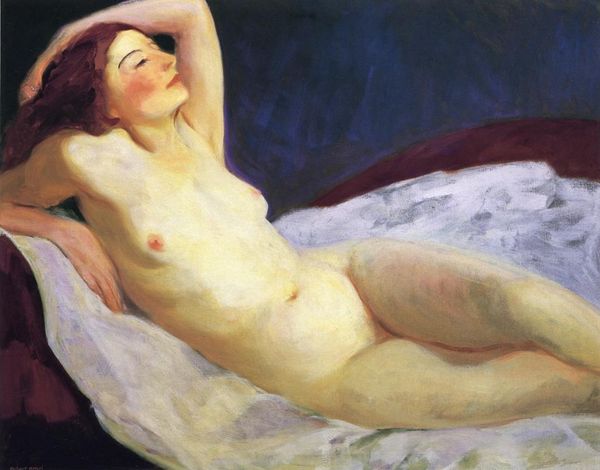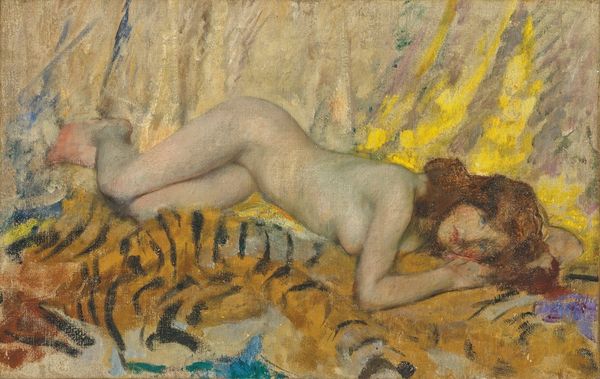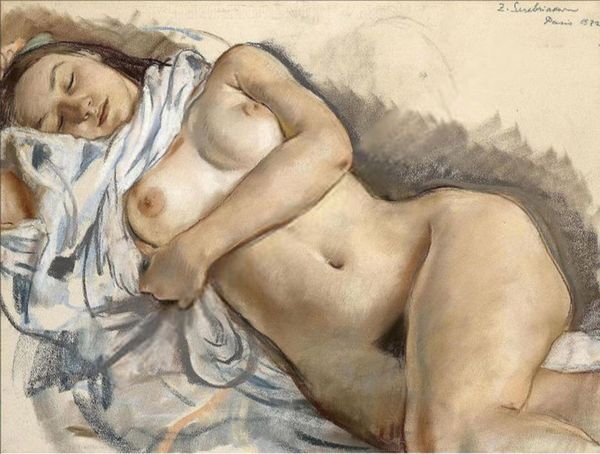
Dimensions: 45.7 x 61 cm
Copyright: Public domain
Curator: This is Luc-Olivier Merson’s "Study for the figure of 'Spring' at l'Opéra-Comique, Paris," created around 1920, rendered with oil paint. Editor: There’s an undeniable tranquility here, a certain lassitude expressed through the pose. Her body is soft, her expression serene, the composition seems to echo Romantic ideals. Curator: Indeed. The figure epitomizes Academic art's emphasis on idealized form. Notice the underpainting, almost a charcoal drawing in itself, giving structure beneath the washes of color. The nude reclines, and its placement is intentional, encouraging our gaze, framing her within a carefully constructed space. Editor: This “constructed space,” however, seems almost devoid of context. The lack of environment shifts the emphasis to the subject's physicality, making the piece about the gaze, both hers and the viewer’s, a kind of theater. How does the artwork play within the grand spectacle of the Opera Comique itself, which catered to a diverse audience? Curator: The title speaks volumes to me. By naming this piece a "Study," Merson deliberately draws attention to his process and material reality of art production and elevates a utilitarian sketch into a finished work that may now circulate within the marketplace. He wishes us to understand and to carefully watch. Editor: He wishes us to watch, certainly. But the female nude in art carries such weight—particularly at this time period in Paris. Its public display reinforces or challenges notions of femininity and beauty and the commodification of women’s bodies within Parisian society. It raises questions. What messages do institutions like the Opera-Comique convey through such images? Who benefits from the proliferation of the nude form? Curator: I concur. What remains is the study itself. The lines and brushstrokes form a corporeal language on canvas. Ultimately, there’s still an undeniably sensual aura and aesthetic consideration, achieved through its execution, divorced somewhat from social context, no? Editor: Not entirely. It provokes reflections of its time period: How does Merson fit within art history, perpetuating or questioning these classical archetypes, particularly concerning the objectification of women in public visual spaces? It really causes us to reflect on the politics inherent in portraying such vulnerable moments on a very grand stage. Curator: Your commentary reveals additional nuance within this particular art piece, making the overall viewing more impactful, while I was keen on the interplay of brush and figure. Thank you. Editor: A pleasure, and certainly, each aspect invites contemplation—perhaps we’ve only just scratched the surface of "Spring."
Comments
No comments
Be the first to comment and join the conversation on the ultimate creative platform.
